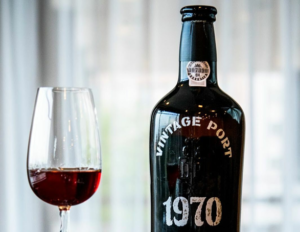Often when we visit a winery and have tasted what was on the list for that day, we’ll sort of nonchalantly ask, “Do you make dessert wine?”. Sometimes the answer is “no” and sometimes it’s “yes, but it’s not available”. But quite often the server will reach below the bar and bring out a small slender bottle that’s full of nectar.
Wineries very rarely advertise their dessert wines for tasting for a few reasons. These wines are usually made in low volume. They may not be made every year. And they tend to be rather expensive. But they are a distinctive wine category and wine tasters should get to know them and recognize that they’re not all the same. One obvious distinction is that some are red and some are white. In this issue we’ll focus on the red ones.
First of all, red dessert wines are NOT just red table wines with sugar added, even if they are sometimes made from the same grapes. The winemakers stop the fermentation before all the sugar is eaten up by yeasts, so the residual natural sugar is quite high.
Photo courtesy of Porto Running Tours.
The most famous red dessert wines are Ports. To our way of thinking, if it doesn’t come from Portugal, it isn’t Port, no matter that some American wineries make dessert wines from Zinfandel or Pinot Noir and call it Port. The real thing is made from grapes uniquely found in the Douro Valley, such as Touriga Nacional and Tinta Roriz. It is distinctive and highly alcoholic, because it is fortified with neutral spirits. There are many varieties of Port including from ruby, tawny, late bottled vintage (LBV) and best (and most expensive) of all vintage Port. Take a trip to Porto and you can taste them all. Oddly, the Portuguese don’t drink it much, but it is beloved by British academics and anyone with a sweet tooth on a wintry night.
There’s a style of red dessert wine not often found in the United States. In France it’s called vin doux naturel or naturally sweet wine; there is no equivalent English term. Almost all of it comes from the south of France, in Provence and Languedoc, usually from Grenache grapes. You may be most familiar with wines known as Banyuls. Of course, all grapes are naturally sweet, but they aren’t all processed the way these wines are. Fermentation is stopped by the addition of some eau de vie, which stops the fermentation. There’s less alcohol than in Port, but it still has a kick.
Finally, there are some specialty wines with long and unique histories. For example, Recioto is made in Italy’s Valpolicella region. It’s Amarone that’s been stopped before it’s finished. The people of that region like dessert too, and you’d better sample it there because it’s not found that often on American wine store shelves. Another is the Greek Mavrodaphne, which you may find in some Greek restaurants and neighborhoods, and is another fortified wine. It may remind you of Port.
